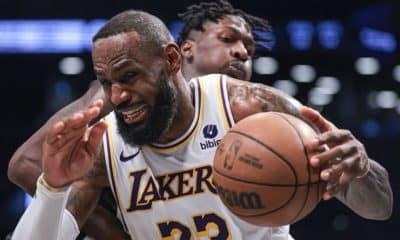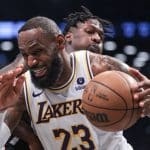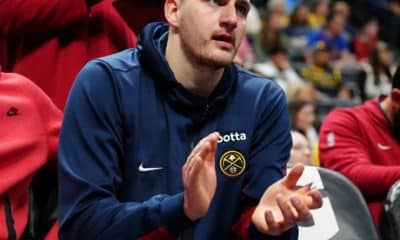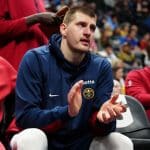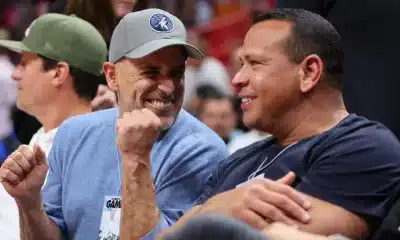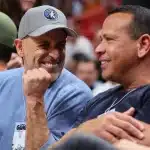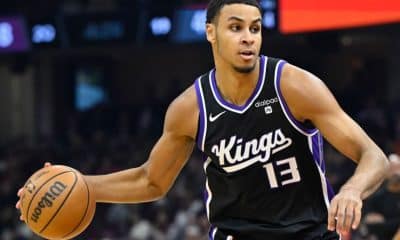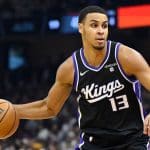NBA
Middle Management: Utah’s Playoff Push Lays a Groundwork
The groundwork has been laid for the Utah Jazz to begin realizing their long-term goals.
For the most analytically inclined, the NBA’s “middle” is the least attractive ground to occupy. If you aren’t contending for the title, the thinking goes, it’s much more desirable to be at the very bottom with a chance to re-stock on the blue-chip talent at the top of the draft.
NBA basketball doesn’t exist in a quantifiable vacuum, though, and this season’s Utah Jazz are the perfect representation of why. To the coldest analytical mind, Utah’s passionate pursuit of a playoff spot that likely only earns them the right to face a behemoth as huge underdogs in the first round might seem counterproductive; with no realistic title aspirations this season, why not strategically “tank,” get out of the race and take the tiny chance that a late lottery slot could land them in the top three in the draft?
The Jazz aren’t thinking that way at any level of the organization. The minuscule odds of landing a transformational player aren’t worth the trade-off, especially not for a franchise already thoroughly stocked up with young talent at every position. It’s a personal thing, too: Anything but an all-out effort to succeed and grow as a group would be borderline offensive to the guys in the locker room.
“It’s huge for us,” Gordon Hayward said. “That’s what we’re striving for.”
The implied reasoning here isn’t too scientific: pride and confidence are just as real for NBA players as anyone else in the world, perhaps more so. No stat can chart the benefits of fighting tooth and nail for a seed or battling a juggernaut in a playoff environment, even just for a few games. No metric can track the sort of impact it might have on guys like Hayward or Derrick Favors, legitimate burgeoning stars who may face a choice whether to stick it out in Utah or bolt town within the next couple years.
There are empirical benefits as well, though. Coach Quin Snyder, not exactly the philosophical type (football metaphors aside), can see an observable benefit for the future.
“I think it’s a different experience for us right now, whether we make [the playoffs] or not,” Snyder said. “The way that you succeed in a situation like this is being focused, not just every game, but every minute of every game. That level of focus is something that we’re learning how to do, and maybe a situation like this will help us grow in that respect as well.”
Whether it’s due to the increased focus Snyder referenced or a more tangible development like the team’s return to (mostly) full health, the results are showing through of late.
Utah’s defense, the bedrock of a group that surprised everyone down the stretch last season with a 50-plus-win pace after the All-Star break, is finally rounding back into form after an up and down year. Snyder values continuity within his defensive scheme as much as any coach in the league, and it’s been tough to find with several of the team’s most integral pieces in and out of the lineup.
“The pieces of our defense that made us unique – one was the ball in Dante Exum, one was the rim in Rudy [Gobert], and also Derrick [Favors] is a unique defensive player,” Snyder said. “You take Dante out of the equation, and then you have Rudy and Derrick less than half the games together… what that did is it put a lot of pressure on some of our other guys.”
The Jazz went 11-16 from the start of December through January 22, the dates where at least one of Gobert or Favors remained sidelined (they only overlapped for six full games, where Utah went 3-3). That’s no death knell, but the damage in this case extended beyond just the specific time both guys missed.
“Doing something for a period of time, for one or two months, you do establish habits,” Snyder said. “And whether those habits last over six months is a different situation.”
The Jazz were missing two of their defensive anchors for just long enough to become comfortable without them, only to then have to re-integrate them at separate times.
“For us, we didn’t have an opportunity to be together long enough to find a groove in that sense, as a collective unit defensively,” Snyder said. “I think that’s started to happen, [and] we’ve gotten a little better.”
Even though the historic defensive level his group attained in the final 30 games of the 2014-15 season set a ridiculously high baseline from which to judge, Snyder is probably understating things here. The Jazz have been the league’s third-best per-possession defense since Favors returned in late January, just decimals behind the vaunted San Antonio Spurs for second overall, and are threatening to finish the year in the league’s overall top five.
“We’ve been hitting a stride,” swingman Rodney Hood said. “We’ve been defending, we’ve been helping each other, we’ve been really taking pride in it. We’ve been showing a lot of emotion on that end. And it’s carrying over.”
A few points of emphasis have supplemented the return to health, mostly in discipline- and effort-related areas.
For a team whose defensive aggression didn’t translate into ultra-high foul totals down the stretch last year, the first few months of the current campaign were a bit surprising. Only the Minnesota Timberwolves fouled their opponents more often on a per-possession basis (used to account for Utah’s snail-like pace) through Favors’ return date. The Jazz appeared to be struggling with the right levels of intensity and contact, elements made worse by a worrying tendency to foul jump-shooters and a surprising amount of difficulty grasping Snyder’s emphasis on the “Euro foul” to stop transition chances – something they’re still not fully comfortable with.
They’ve toned it down since returning their defensive anchors, which Snyder has credited as “a larger shift than anything” while trying to account for the team’s improved defensive performance overall. Two fewer fouls for every 100 possessions may not seem like much, but the margins here are minuscule – the Jazz allowed among the 10 highest number of per-possession free throws before returning Favors and Gobert, but concede a borderline bottom-five figure since. They’ve grown more and more disciplined since February, a fact reflected in the numbers.
“I think it’s emphasis,” Snyder opined. “It’s something that we’ve talked a lot about – it’s actually helped our defense that we fouled a lot at the beginning of the year.”
Team rebounding has ticked up a few notches back into the league’s elite, another important element. Whether due to personnel, waning focus or some other major factor(s), the Jazz were strangely lacking on the defensive glass – after closing the previous year as an elite team here, Utah was just 19th by percentage prior to returning both starting big men. They’re back into the top five league-wide since, and are sacrificing nearly two fewer points a night to second-chance opportunities as a result.
Put it all together, and the Jazz are quickly drawing the sort of “no one wants to see this team in round one” buzz typically reserved for a team like the Memphis Grizzlies this time of year – so long as they get in, that is, not yet a certainty by any stretch. Even if they likely wouldn’t have the horses to offer more than a token challenge to the Spurs, Warriors or Thunder, those groups will feel this Jazz team, another frequent Snyder point of emphasis.
“Teams may have some hot spurts, but at the end of the day we make them take tough shots,” says Hood.
The aches and bruises will almost certainly last longer for any potential first-round opponent than the series itself.
Gauging just how much they’ll benefit long term from the chase and a few actual playoff games is impossible for now, but all the signs point in the right direction. Utah’s is an engaged and like-minded locker room, with guys learning more about themselves and their capabilities on the fly. Snyder has their full trust, a plain benefit of such a player-friendly coaching style, even when it includes moves like leaving one of Gobert or Favors on the bench to close games here or there.
“We all trust Coach [Snyder] with what he decides and who he decides to play,” said Hayward. “A team is a good team when people aren’t complaining. They realize what’s important, and that’s getting a win.”
If buy-in and skill development continue at the current rate, a first-round exit feels like this team’s baseline moving forward. They have plenty of space to continue growing, with an embedded coach quickly and emphatically earning his pre-NBA reputation for player development. Hayward and Favors might be the only two true core pieces who don’t have some degree of significant development still to come.
The groundwork has been laid for a franchise beginning to realize their long-term goals. The Jazz have survived a stiff health test and come out the other side better for it; their presence in the league’s middle looks likely to be short-lived.
Add Basketball Insiders to your Google News Feed!
-
Main Page 1 week ago
LeBron James joins Michael Jordan as only NBA players with multiple 40-point games after turning 39
-
Main Page 1 week ago
Nikola Jokic 1st NBA player since Oscar Robertson with 26+ points, 18+ rebounds, & 16+ assists in a game
-
NBA 1 week ago
Ex-MLB star Alex Rodriguez vows to keep trying to buy Timberwolves franchise despite rejection
-
Main Page 1 week ago
Kings are 14-5 this season when Keegan Murray scores 19+ points
